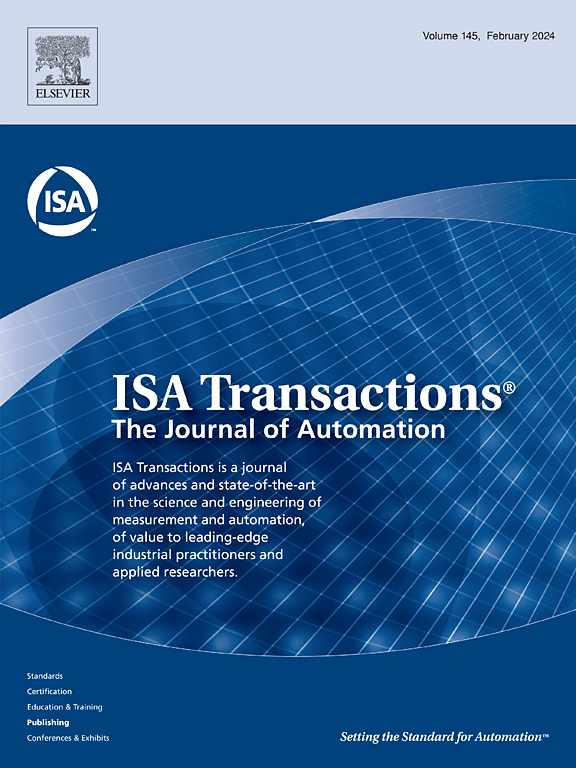基于故障仿真模型的Ramanujan数字孪生结构旋转机械健康监测。
IF 6.3
2区 计算机科学
Q1 AUTOMATION & CONTROL SYSTEMS
引用次数: 0
摘要
常用的旋转机械健康监测方法存在依赖于预设参数的选取等缺点。此外,由于传输路径等因素造成的较强噪声干扰也阻碍了许多故障特征提取方法的实际应用。为了克服这些差距,引入了数字孪生概念,并设计了一种称为Ramanujan数字孪生(RDT)的新数字孪生体系结构。采用拉马努金周期变换(RPT)模型分离潜在故障特征。针对旋转机械全生命周期的每一帧,构建了高保真仿真模型。一旦获得高保真仿真诱导的虚拟样本,RPT将用于提供潜在故障的指导信息。利用这些信息,可以在不预先选择参数的情况下提取潜在故障特征。通过构建健康指标(HI),可以完成多个服务端任务,包括健康监控和早期故障预测。算例结果表明,该方法不仅能有效地提取潜在故障特征,噪声干扰小,而且能比故障日志更早地监测和预测潜在早期故障。本文章由计算机程序翻译,如有差异,请以英文原文为准。
A faulty simulation model guided Ramanujan Digital twin architecture for rotating machine health monitoring
The conventional widely-used health monitoring methods for rotating machines have shortcomings such as the reliance on the selection of the preset parameters. Also, the strong noise interference caused by factors such as transmission path hinders the practical application of many fault feature extraction methods. To overcome these gaps, the digital twin notion is introduced and a new digital twin architecture called the Ramanujan Digital Twin (RDT) is designed. The Ramanujan Periodic Transform (RPT) model is employed to isolate the potential fault feature. For each frame in the whole life cycle of the rotating machine, the high-fidelity simulation model is constructed. Once the high-fidelity simulation-induced virtual sample is obtained, the RPT will be used to provide guidance information about the potential fault. With this information, the potential fault feature can be extracted without preset parameter selection. A health indicator (HI) can be constructed to perform multiple service end tasks including health monitoring and early fault prediction. Two case studies are carried out and the results show the proposed method can not only extract the potential fault feature more effectively with less noise interference but also monitor and predict the potential early fault earlier than fault log.
求助全文
通过发布文献求助,成功后即可免费获取论文全文。
去求助
来源期刊

ISA transactions
工程技术-工程:综合
CiteScore
11.70
自引率
12.30%
发文量
824
审稿时长
4.4 months
期刊介绍:
ISA Transactions serves as a platform for showcasing advancements in measurement and automation, catering to both industrial practitioners and applied researchers. It covers a wide array of topics within measurement, including sensors, signal processing, data analysis, and fault detection, supported by techniques such as artificial intelligence and communication systems. Automation topics encompass control strategies, modelling, system reliability, and maintenance, alongside optimization and human-machine interaction. The journal targets research and development professionals in control systems, process instrumentation, and automation from academia and industry.
 求助内容:
求助内容: 应助结果提醒方式:
应助结果提醒方式:


